Milonga Etiquette
Here you will find information about social dance etiquette for milongas and practicas as well as guidelines for conduct in classes. If you are attending social dances please be sure to read through this page and let us know if you have any questions. Also we are here to listen to any concerns you have regarding misconduct in our social dance events or classes.
Importance of the Code of Conduct
“Los Codigos” or the code of conduct for dancing in the milongas is part of the cultural heritage of tango. We talk about milonga etiquette in our classes because the training for a social dancer it is not only dancing skills, there are also necessary interpersonal skills to maintain a safe dancing environment and allow for everyone to feel respected.
Etiquette versus Rules
Besides milongas there are other types of tango social dances (festivals, marathons, encuentros) that sometimes have extra rules like special seating arrangements, invitation only guest lists with role balancing and other guidelines. This is not the traditional milonga. The milonga is ‘un cacho de vida’ – a little piece of life – where anything can happen! Of course disrespectful behavior should not be tolerated. In the early days of the milongas an unruly dancer creating a disturbance would be corralled and elbowed right off the dance floor! If someone is not respecting the etiquette you can send a message by not accepting to dance with them and kindly explaining what you feel is disruptive or asking the organizer to talk to them.
Los Codigos de la Milonga
Social Dance Code of Conduct
Following the code of conduct is the best way to feel empowered to choose with whom and when to dance and it allows for couples to circulate on the dance floor with ease. Please read through each section and let us know if you have any questions.
Personal Hygiene
The embrace in tango puts you in close contact with another person therefore your personal hygiene is very important. Before going to dance you need to make sure you have a clean body, clean hair, fresh breath and clean clothes. Be careful not to go overboard with perfumes as that can be just as unpleasant and some people have allergies to chemicals in scents.
Cabeceo - Invitation to Dance
The Cabeceo is a non verbal invitation to dance. Making eye contact and then a nod of the head is the polite way to invite and accept to dance at a milonga. At the beginning of a tanda both men and women who would like to dance will look around the room to see who they would like to dance with. Making eye contact lets the other know that you would like to dance with them. On the contrary if you are not looking at someone or avoid making eye contact it means you are not interested in dancing with them at the moment. It may be that you don’t like that orchestra or really like to dance that orchestra with someone else or just want to take a break. Even though the cabeceo is technically a nod of your head your whole body posture plays a role in the cabeceo. If you are slouched in your chair, off in a dark corner, have your shoes off, deep in conversation with someone, eating, checking your phone or snuggled up to your date for the evening … these are all signals that you DO NOT want to dance at the moment. This custom empowers both men and women to discreetly choose their dance partner and avoids someone feeling obliged to dance. The connection in the dance is only going to feel good when there are two willing partners. Don’t pressure someone to dance with you. Don’t accept when you do not want to dance.
Tandas and Cortinas
Music is played in sets of 3 – 5 songs called tandas separated by a short musical break called a cortina. Throughout the evening dancers change partners pairing up for a tanda of songs together and leaving the dance floor during the cortina to take a break or look for another partner to dance the next tanda. When you decide to dance with someone the agreement is to dance the entire tanda. You would only leave the dance floor before the cortina if you have a very good reason ( inappropriate behaviour, pain etc..) After a tanda is finished it is polite to thank your partner and escort them off the floor. It is not customary to dance consecutive tandas with the same partner.
La Pista - Entering the Dance Floor
La pista es sagrada. The dance floor is sacred, never walk through the dance floor to cross the room or block the line of dance in any way. Usually there will be more space to enter the dance floor at the corners. If you are entering while a song is playing and dancers are already moving in the line of dance it is important to enter with minimum disruption and to adapt quickly to the circulation of the dancers. Check to make sure the couple advancing sees you as you enter the floor.
During the Tanda
When one song ends and before the next one begins you will take a moment to let go of the embrace. It is customary not to dance the first couple phrases of the song as dancers use that time to chat, identify the music and connect in the embrace. In the milonga you are there to enjoy the connection with your partner and the music. No talking once you are in the embrace and have started dancing. Also no teaching or practicing on the dance floor. See difference between a milonga and a practica.
Navigation
The line of dance moves counter clockwise. Depending on the size of the dance floor and how many couples are dancing there will be at least one lane moving around the perimeter of the floor and often an inner lane. It is customary for the more experienced dancers to dance in the outer lane and those with less navigation experience to be in the center. Never change lanes or pass couples. It is not a race! The beauty of the milonga is when there is a sense of flow on the dance floor. Being aware of the people around you and circulating on the floor is part of dancing tango. The couple behind should keep an appropriate distance (not too close or far) from the couple in front of them. The man’s role has the responsibility to protect their partner and the other couples so that no-one is bumped, kicked, or stepped on. You should not use expansive movements or high boleos on a crowded floor just as you should not be blocking the floor or using tiny steps when you need to take the available space to circulate. Maintaining respect and awareness for the other dancers on the floor you can feel the freedom to dance and enjoy!


The Tango Studio Vancouver
Santiago & Deborah
T: 604 338 4069
E: [email protected]
2474 Prince Edward St.
Vancouver, BC Canada
